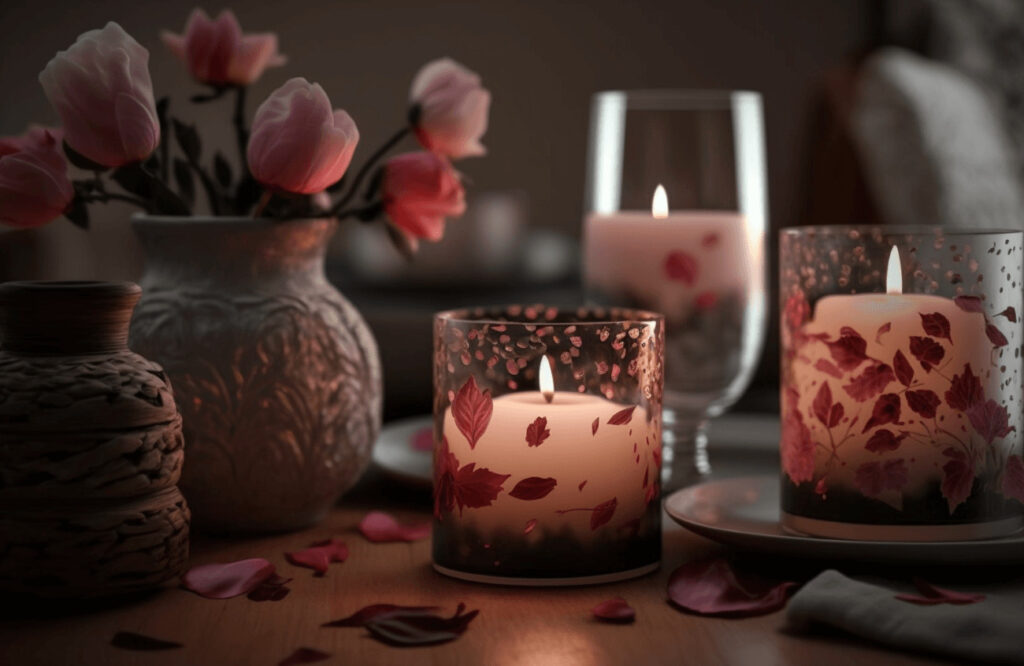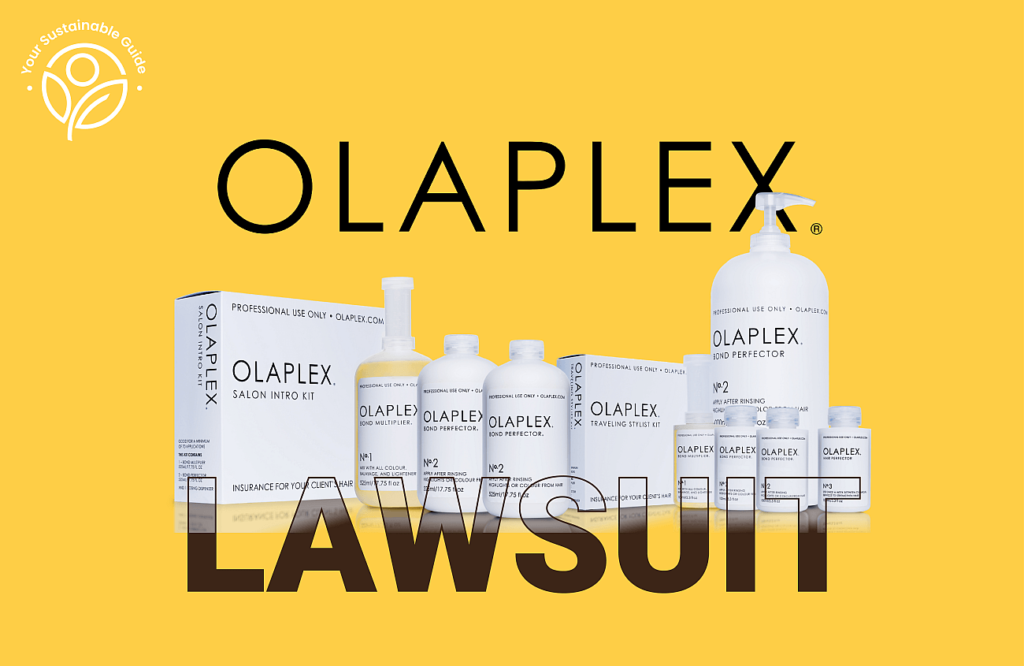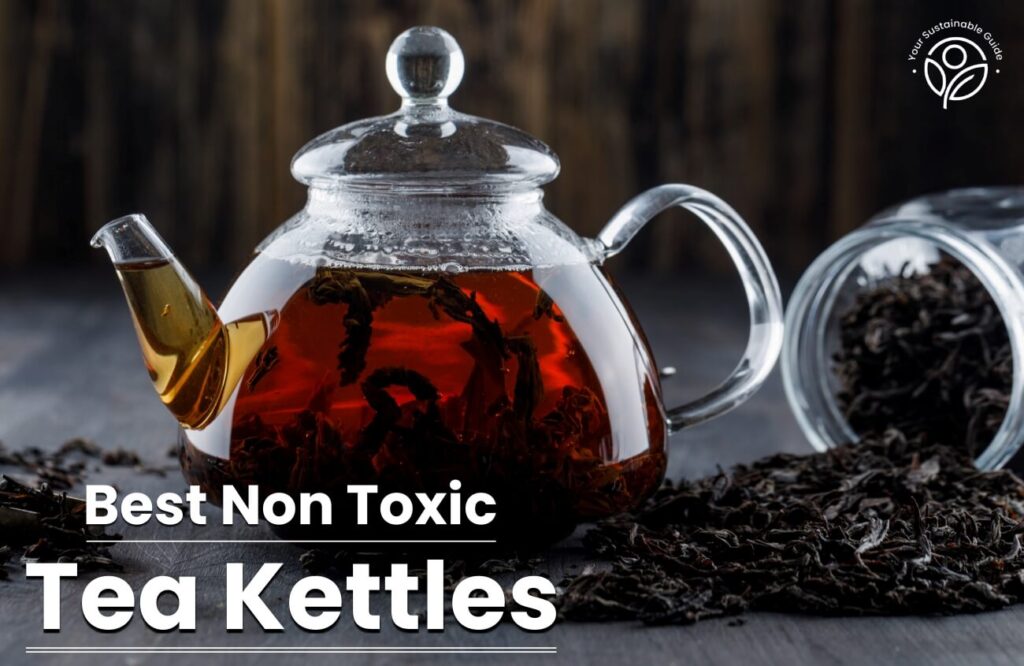Cooking is an art, and every artist needs the best tools! In the world of culinary creativity, your utensils are the keys to your gastronomic symphony. That’s why discovering the best materials for cooking utensils is essential, as it can elevate your kitchen experience from a daily chore to a delightful adventure. But wait, its not just convenience and ease of cleaning, that makes a cookware the gem of your kitchen. Instead, these utensils play a vital role in the safety of your meals.
Some materials lurking in cookware can pose health concerns you may not be aware of. Take non-stick cookware for instance; they look chic, requires less oil and are easy to clean, but who would’ve thought that these non-stick coatings are devils in disguise? That’s why, to ensure your culinary creations are as safe as they are delicious, we’ll take a closer look at the common materials used for making utensils. From their user-friendliness to their impact on your well-being, we’ll guide you in selecting the perfect kitchen companions. Bring it on pots and pans!
Brands That Use Best Cooking Utensils Material
1. Great Jones
2. Xtrema
3. 360 Cookware
4. Caraway
5. All-Clad
6. Kana
7. Our Place
8. Staub
9. Bambu
10. Emile Henry
What to Look for While Choosing the Best Material for Cooking Utensils
Discovering the best material for cooking utensils often requires a bit of experimentation. Just as every professional chef has a unique cooking style, each material has its strengths and quirks. Though we have provided certain pointers below, you can uncover what suits your kitchen needs best by trying out various utensils. It might mean embracing the rapid heating of copper for certain dishes or relishing the even cooking of cast iron for others. Ultimately, this culinary journey allows you to craft your kitchen arsenal, tailored to your preferences, making every meal a delightful adventure.
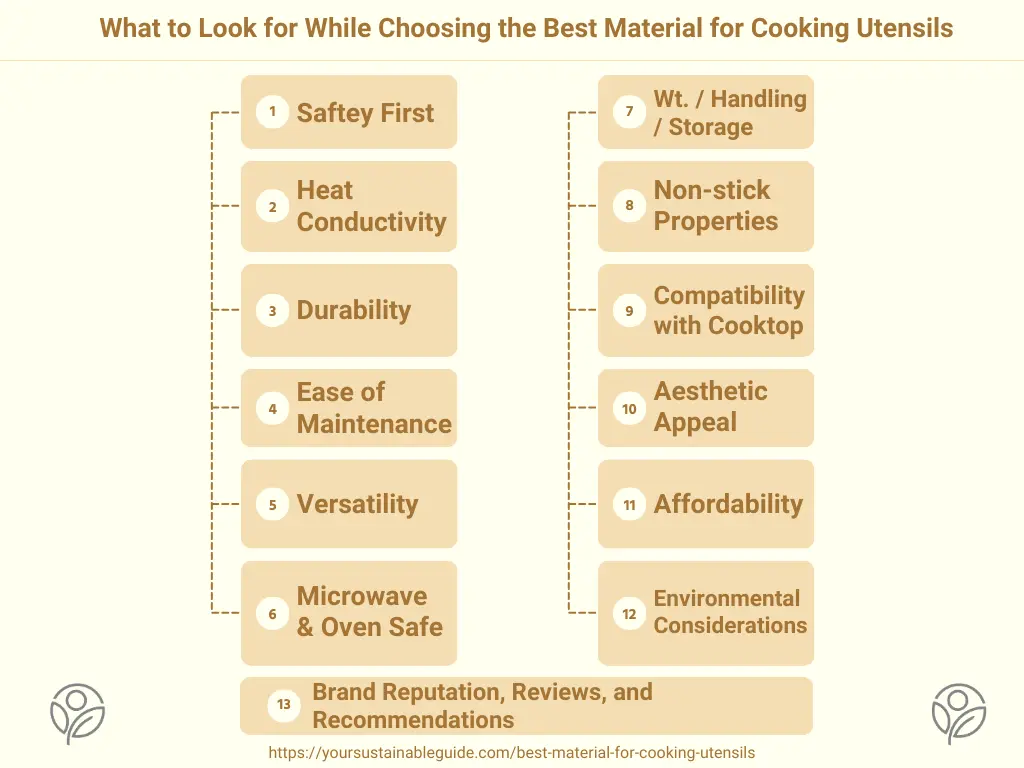
Safety First
When selecting cooking utensils, prioritize safety by choosing materials that are non-reactive, inert and free from harmful chemicals. These materials won’t interact with your food, ensuring that no unwanted substances leach chemicals into your dishes, which can be harmful to your health.
Heat Conductivity
Different cookware materials conduct heat differently. Copper, for instance, heats up quickly but may result in uneven cooking. In contrast, cast iron distributes heat evenly across the cooking surface, making it suitable for simmering and searing.
Durability
Look for utensils made from durable materials like stainless steel or cast iron. These materials can withstand frequent use and are less likely to warp or wear out over time.
Ease of Maintenance
Opt for utensils that are easy to clean and maintain. Stainless steel and silicone are known for their low-maintenance properties, while some materials may require special care to prevent rust or damage.
Versatility
Versatile materials, such as stainless steel and cast iron, are suitable for various cooking techniques. They can go from stovetop to oven, making them valuable additions to your kitchen.
Microwave and Oven Safe
Check if your utensils are safe for microwave and oven use. Silicone is a microwave-safe option, while materials like plastic may not be suitable for high-heat cooking.
Weight, Handling, and Storage
Consider the weight of the utensils, especially if you have to handle them for extended periods. Ergonomically designed handles can improve comfort. Additionally, think about how easily they can be stored in your kitchen.
Non-stick Properties
Materials like silicone and certain coated pans offer non-stick properties, reducing the need for excessive oil when cooking. However, be aware of potential drawbacks, such as the wear and tear of chemical nonstick coatings.
Compatibility with Your Cooktop
Ensure that the material is compatible with your cooktop, whether it’s gas, electric, or induction. Some materials may not work efficiently on certain surfaces.
Aesthetic Appeal
While functionality is essential, the visual appeal of your utensils can enhance your kitchen’s ambience. Choose materials and designs that align with your kitchen’s aesthetic, so that you don’t feel the need to replace them after a while.
Affordability
Consider your budget when selecting materials for your cooking utensils. While high-quality materials may come at a higher price, they often offer long-term value and durability.
Environmental Considerations
Think about the environmental impact of your choice. Eco-friendly materials like bamboo, cast iron and stainless steel are sustainable options that reduce your ecological footprint.
Brand Reputation, Reviews, and Recommendations
Research brands and read user reviews to assess the quality and performance of utensils made from different materials. Recommendations from our sources can also guide your decision-making process because we scour through thousands of reviews and pick the best of all.
Best Cooking Utensils Materials for Good Health
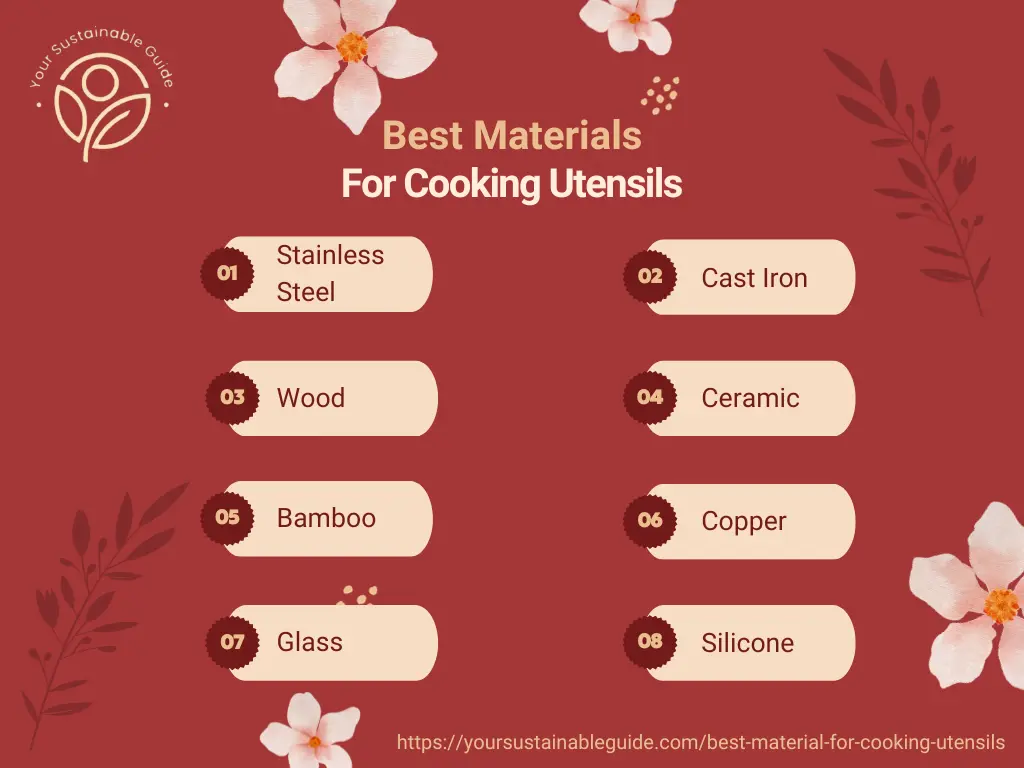
1. Stainless Steel
Steel is essentially a blend of iron and carbon. But when 10.5% chromium is added into the mix, it magically becomes stainless steel. For cooking, though, we want the food-grade kind, which packs a minimum of 16% chromium. Sometimes, a bit of nickel is added to enhance the stainless characteristics. And to make it cook better, metals like standard aluminum or copper are included for improved heat conductivity.

Pros
- Stainless steel utensils are microwave-safe.
- Resistant to rust.
- Safe for cleaning in the dishwasher.
- Scratch-resistant.
- Strong and long-lasting.
Cons
- Inadequate care of fully-clad stainless steel could potentially pose risks.
- The release of nickel or chromium into food may lead to health issues.
- Pure stainless steel doesn’t act as a good heat conductor. The addition of metals like aluminum and copper is required to get the stainless properties.
2. Cast Iron
Cast iron pans and skillets are tough and flexible for various cooking methods. When seasoned right, they become naturally non-stick and hold heat evenly, ensuring consistent cooking. Plus, they can go from stovetop to oven. Cast iron cookware is another of the safest cooking utensils that is available in two varieties: Uncoated cast iron and Enameled cast iron. Food cooked in iron utensils is really beneficial for people with iron deficiency. However, for those who worry about iron leaching into food, simply avoid cooking acidic foods in cast iron to prevent this concern.
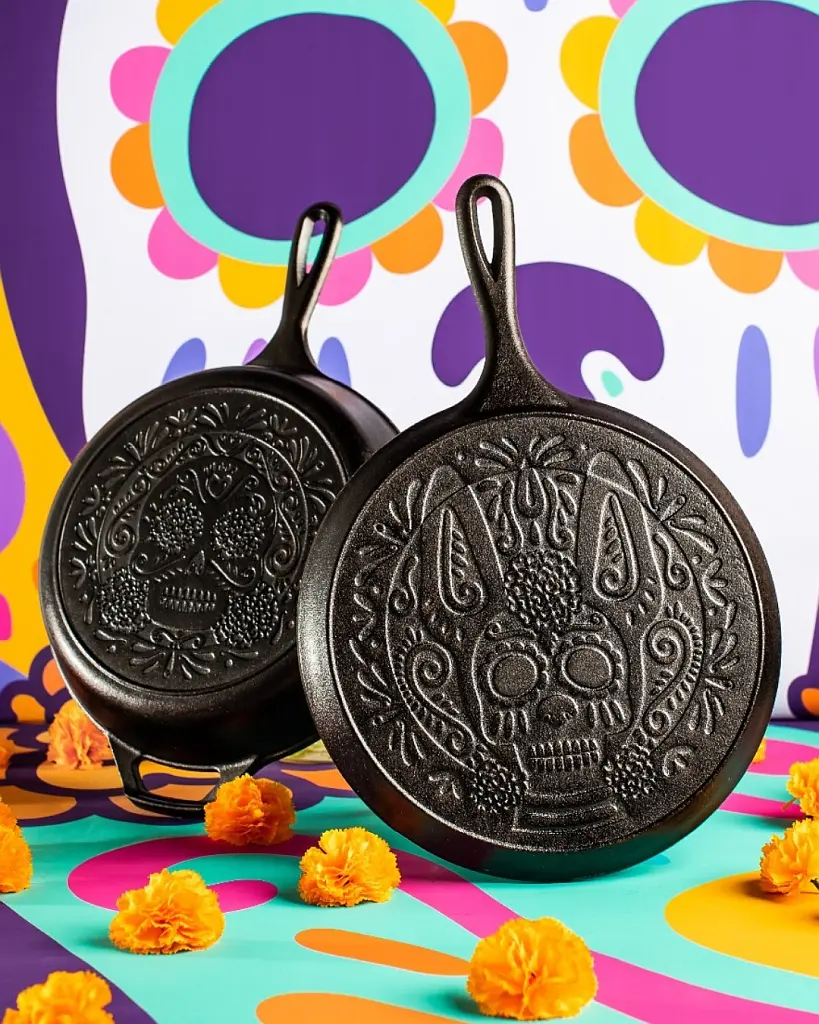
Pros
- Microwave-safe.
- Maintains heat for extended periods.
- Durable, lasting for many decades with good care.
- Bare cast iron can improve with use.
- Releases iron into food, potentially aiding in addressing iron deficiency.
Cons
- Cast iron is susceptible to rusting.
- Heat is conducted slowly and unevenly in cast iron.
- It’s heavier than many other materials.
- Bare cast iron can alter the color and flavor of acidic foods.
- Enameled cast iron might potentially release toxic substances such as lead or cadmium.
3. Wood
Wooden cooking utensils offer a green choice as they naturally biodegrade and provide a non-toxic option for your kitchen. When selecting wooden kitchen utensils, opt for those labelled “food-safe” and crafted from hardwood like beechwood, teak, or maple. These woods feature tight grains that resist stains and bacteria. To ensure their longevity, it’s crucial to clean wooden utensils correctly. After washing, allow them to thoroughly air-dry on a rack to prevent mold growth.
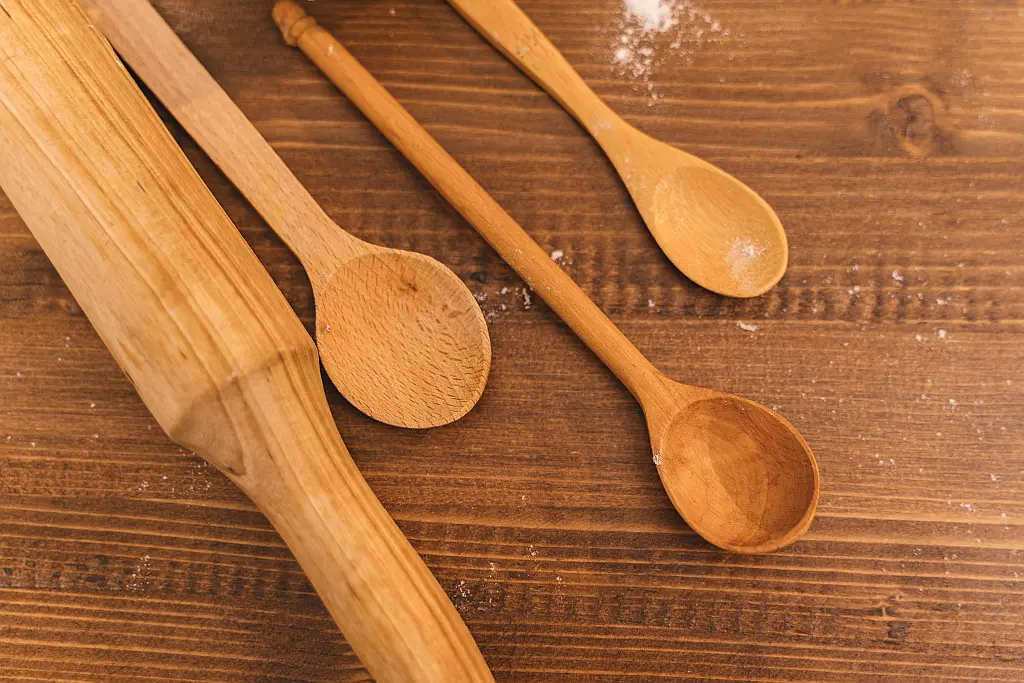
Pros
- Wood is durable.
- Gentle on non-stick surfaces, preventing scratches.
- 100% biodegradable.
- Food-neutral; it doesn’t react with acidic or alkaline foods.
Cons
- Prone to absorbing odors.
- Vulnerable to staining due to its porous surface.
- Prone to breakage, potentially leading to hygiene concerns if food gets trapped in the cracks.
- Not dishwasher-safe as moisture may damage the wood.
4. Ceramic
When it comes to ceramic utensils, you have two great options to choose from 100% pure ceramic cooking utensils and ceramic-coated ones. These utensils not only bring a touch of natural elegance to your kitchen but also offer versatility and durability for a range of culinary tasks. Whether you opt for pure ceramic or ceramic-coated utensils, you’ll find that they excel in both functionality and aesthetics.

Pros
- Scratch-resistant.
- Excellent heat retention with slow, even heat distribution.
- Odor and stain-resistant.
- With proper care, they can last for many years.
- They neither interact with food nor emit any chemicals, making them the safest material for kitchen utensils.
Cons
- Ceramic cookware is expensive.
- Vulnerable to cracking when exposed to sudden temperature changes.
- Ceramic-coated utensils essentially consist of metal with a ceramic coating, which may pose risks.
5. Bamboo
Bamboo is an excellent choice for cooking utensils with a rich history in Asian cuisine. Bamboo kitchen utensils are both lightweight and incredibly durable, boasting impressive heat resistance. What sets them apart as one of the safest options on the market is their natural composition. Plus, the benefits of bamboo utensils cover the fact that bamboo is renewable in nature, making it a standout in terms of sustainability, aligning perfectly with eco-conscious kitchen choices.
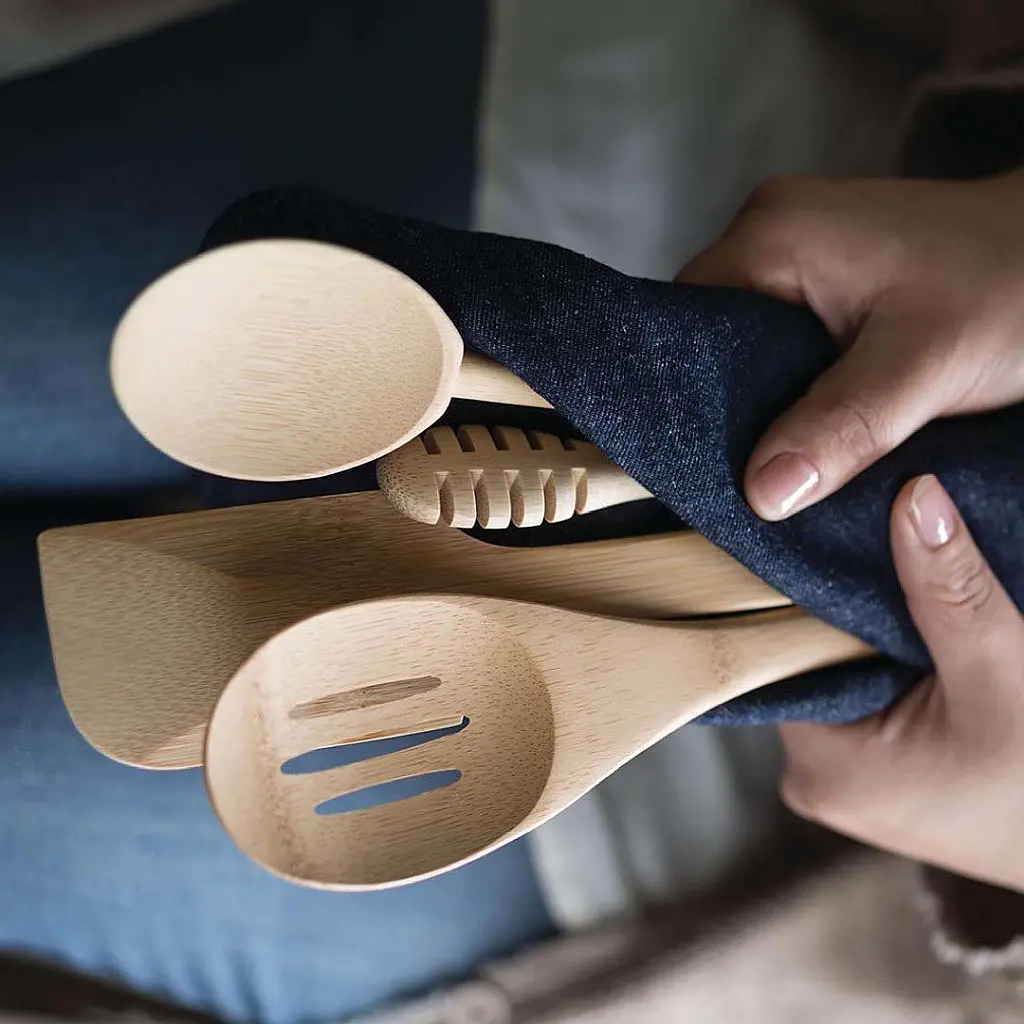
Pros
- Bamboo utensils are heat resistant, ensuring no surprise burns.
- 100% biodegradable.
- Being completely natural, organic bamboo utensils won’t add any flavors to your dishes.
- Offers the best strength-to-weight ratio, making it exceptionally lightweight.
- As the strongest type of wood on Earth, well-cured bamboo utensils can last for years when grown to maturity and finished correctly.
Cons
- Prone to splintering if not properly maintained.
- Vulnerable to damage from prolonged exposure to moisture.
- May lose its finish and appearance over time with frequent use.
6. Copper
Copper cookware may feel a bit tricky for first-time users. It’s not only the priciest option, but it heats up super fast, demanding attention while cooking. But it’s got exceptional heat conductivity, even surpassing aluminum and can cool down in a flash. That’s why using copper cookware takes some finesse. It is recommended to refrain from using utensils made solely from copper. Some brands use copper on the outside of the utensils, while others make it the core of fully-clad stainless steel cookware. Because of its reactivity with acidic foods, copper is rarely used as a cooking surface. Instead, the majority of copper cookware brand incorporates stainless steel as the cooking surface. So, you’re good to go! Just make it a point to never pick uncoated copper cookware.
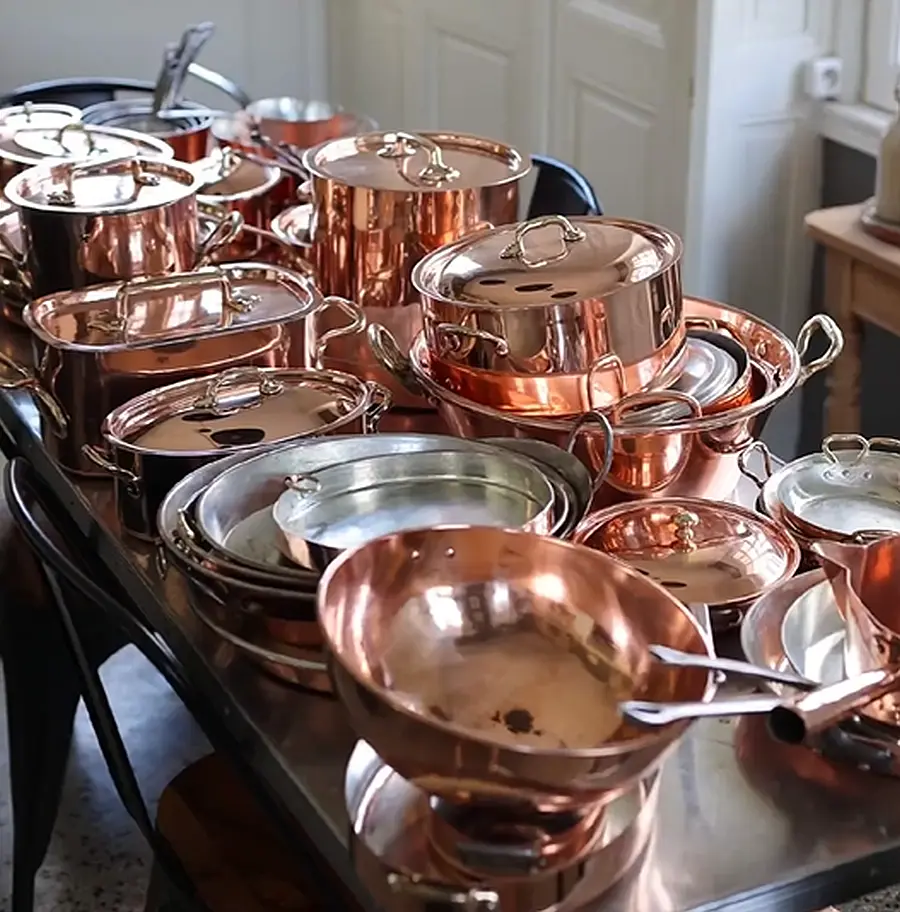
Pros
- Ensures even heat distribution.
- Oven-safe for cooking.
- Possesses antimicrobial properties.
- Superior conductors of heat compared to materials like cast iron or stainless steel.
- Adds an aesthetic charm to your kitchen.
Cons
- Uncoated copper utensils release copper into food.
- Needs frequent polishing to preserve its luster.
- Prone to scratches.
- Reactive to various natural elements, including acidic foods, so it’s often lined with non-reactive materials like tin or stainless steel.
7. Glass
Glass utensils are gaining popularity for their modern aesthetics, seamlessly blending into any kitchen decor. From pans to plates and cups, glass serves various culinary purposes. What makes it stand out is its non-reactive nature, ensuring your meals taste as they should. Plus, cleaning glass cookware is a breeze, with no lingering odors or flavors.

Pros
- Fully recyclable.
- Microwave-safe.
- Holds heat longer.
- With proper care, glass utensils can last for 7 to 10 years.
- Doesn’t interact with food, including acidic dishes.
- Dishwasher-safe thanks to their smooth, non-porous surface.
Cons
- Conduct heat well, though not as effectively as metals.
- Weigh more than metals, plastics, wood, silicone, etc.
- Prone to breakage from rapid temperature changes or force.
- Inferior quality utensils may release hazardous substances like lead and other chemicals.
8. Silicone
Silicone is a nonstick plastic alternative crafted from silica, which is made of naturally occurring non-harmful elements like quartz sand, carbon, hydrogen, and oxygen. The FDA assures that food-grade silicone, which is safe to use in cooking up to 500°F (confirm the label for precise limits), as well as freezing temperatures, is entirely safe. So, while shopping for silicone cookware, food-grade silicone utensils must be your pick. However, be cautious as some products may contain fillers that could lead to quicker wear and tear or release unwanted chemicals into your food.

Pros
- Poor heat conductor.
- No reactivity with food.
- Flexible and suitable for reaching tricky spots.
- Gentle and ideal for coated non-stick surfaces.
Cons
- Doesn’t break down naturally.
- May release certain chemicals when exposed to excessive heat.
Cooking Utensils Materials to Avoid
Aluminum
Aluminum cookware can leach small amounts of aluminum into food, which can accumulate in the body over time and lead to several health issues. Even high-quality anodized and coated aluminum metal utensils may become harmful with extended use, especially if the coatings chip off, releasing toxic substances like lead and cadmium. The quality of hard-anodized aluminum varies among manufacturers, making it difficult for consumers to determine the safety of their cookware. While some sellers claim that anodized aluminum is safe, the inconsistency in quality raises concerns. Therefore, it’s best to refrain from using aluminum utensils and opt for non-toxic cooking utensils that do not pose such risks to your health and well-being.
Teflon
In the past, Teflon was manufactured with PFOA, a chemical associated with serious health issues, including liver problems, thyroid disorders, cancer, and infertility. Although PFOA has been banned since 2015, there is still a risk of encountering low-quality PTFE or other inferior non-stick coatings from certain manufacturers. The lack of transparency regarding coating materials in some Teflon products makes it challenging for consumers to ascertain their safety. Furthermore, the production and disposal of non-stick pans and pots, even those using safer PTFE, can have adverse environmental impacts. Considering these factors, it’s wise to explore alternative cookware options known for their safety and longevity while being environmentally conscious.
Plastic
Using plastic utensils for cooking or plastic food containers for packing steaming hot dishes is the worst thing you can do. The reason being, plastic utensils, when exposed to high temperatures, emit harmful chemicals into food like BPA and phthalates into the food while it is prepared. These chemicals can pose health risks when ingested, particularly over prolonged periods. To ensure food safety and minimize health concerns, it is advisable to steer clear of plastic cooking utensils. Safer alternatives like silicone, stainless steel, or wood offer peace of mind, as they do not carry the same risk of chemical leaching and are better suited for kitchen use, making them a wiser choice for health-conscious consumers.
Nylon
Nylon cookware has a critical limitation— They can only withstand temperatures up to 400°F. Beyond this point, they begin to melt and can release hazardous substances into the food, threatening your health. Moreover, the production of nylon consumes significant energy and resources, contributing to environmental issues. Additionally, nylon is not biodegradable, which means it persists in landfills, further harming the environment. Given these limitations and possible risks, avoiding nylon cooking utensils is advisable to ensure both personal safety and environmental responsibility.
10 Best Cooking Utensils Brands That Are Safe to Use
Just as using safe storage containers for food is important, choosing safe dinnerware and cookware that you truly enjoy using, without the worry of toxic fumes or metal contamination in your meals, is also important and can prove to be quite a challenge. It’s not a decision to rush, but rather a thoughtful process. To make this choice easier, we’ve compiled a selection of mindful cookware brands that are dedicated to serving your kitchen needs. Like non toxic tea kettles and coffee makers, these labels too prioritize safe and best materials for cooking utensils, giving you the peace of mind you deserve while preparing healthy meals for yourself and your family. Let’s check out Caraway, Staub, Great Jones, Our Place, Xtrema, 360 Cookware, Bambu, All-Clad, Kana, and Emile Henry.
1. Great Jones

Product Range: Skillets, Stockpots, Saute pans, Bread pans, Sauciers, and much more.
Great Jones was born from a passion for both good food and quality cookware, and we’re talking heirloom-quality pieces loved by female chefs and food writers. Backed by culinary heavyweights like David Chang of Momofuku fame, this eco-friendly cookware brand has something for every type of cooking, whether you’re using an induction stove or another type of cooktop. The colorful collection has become their best-seller, and their Dutch oven is a savior for anyone prone to the occasional kitchen mishap. What’s even better is that all their cookware is made from non-toxic materials like stainless steel, ceramic, and cast iron. Plus, their user-friendly website and vibrant style take the intimidation out of cookware shopping.
2. Xtrema

Product Range: Dutch ovens, Saucepans, Skillets, Stockpots, Bakeware, Teapots, and more
Xtrema is a trusted family-owned ceramic cookware brand in the U.S., that is striving to make your cooking experience safer and more sustainable. Their range of kitchen utensils is entirely crafted from pure ceramic, which means there are no harmful chemicals involved. This eco-friendly cookware is a kitchen addition for those who care about the environment, as it’s zero-waste and made from 100% natural ceramic – a blend of minerals, clay, oxides, and water. The pots and pans are non-reactive in nature, so they won’t alter the taste of your food or release any unwanted chemicals, ensuring your meals are both delicious and safe. Recommended by doctors and nutritionists, Xtrema cookware is one of the healthiest options as it is free of lead, cadmium and metal, making it the ideal choice for a sustainable supper.
3. 360 Cookware
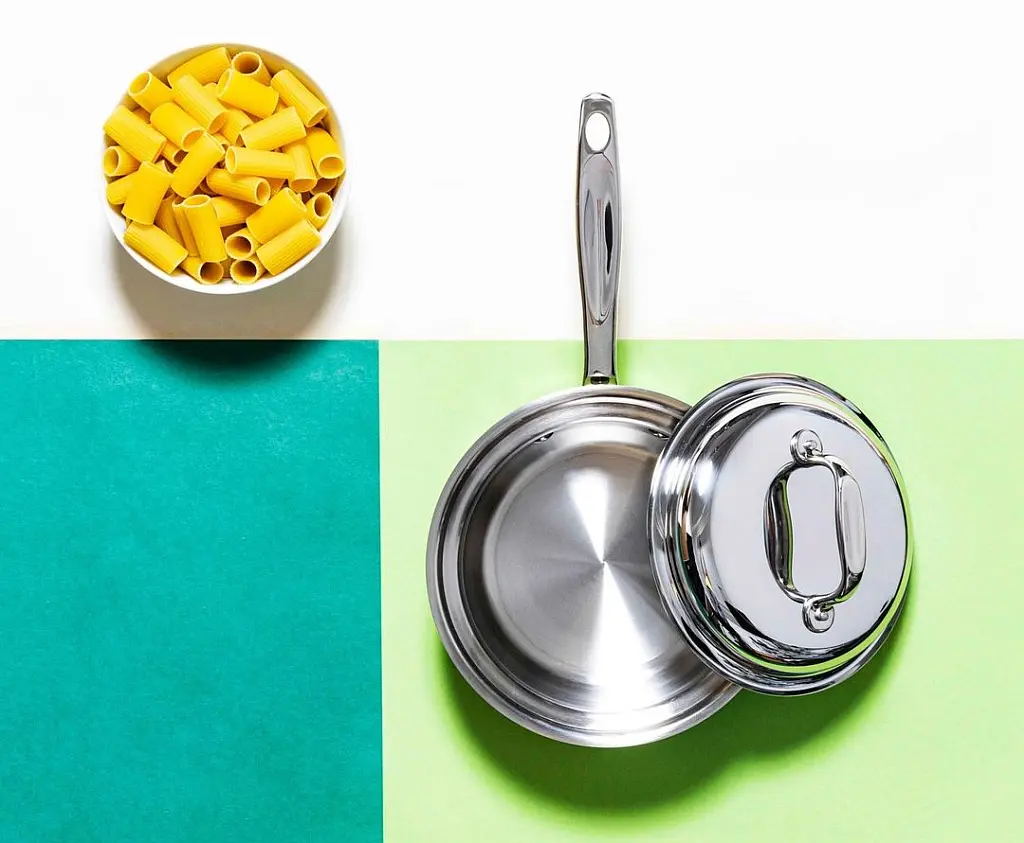
Product Range: Saucepans, Saute pans, Stockpots, Fry pans, Slow cookers, etc.
360 Cookware stands out as one of the U.S.’s top non-toxic cookware brands in 2023, focusing on crafting stainless steel utensils that come with a lifetime guarantee. Their range includes a variety of non-toxic wooden and stainless steel utensils, such as slotted spoons, spatulas, and dapple spatulas – all proudly handcrafted in the USA. What sets them apart is their commitment to health and the environment, as their products are free from harmful substances like PFAS, PFOS, PFOA, and PTFE. With over 60,000 kitchens benefiting from their heirloom-quality cookware, 360 Cookware has become a trusted choice for eco-conscious cooks for offering some of the healthiest kitchen utensils.
4. Caraway
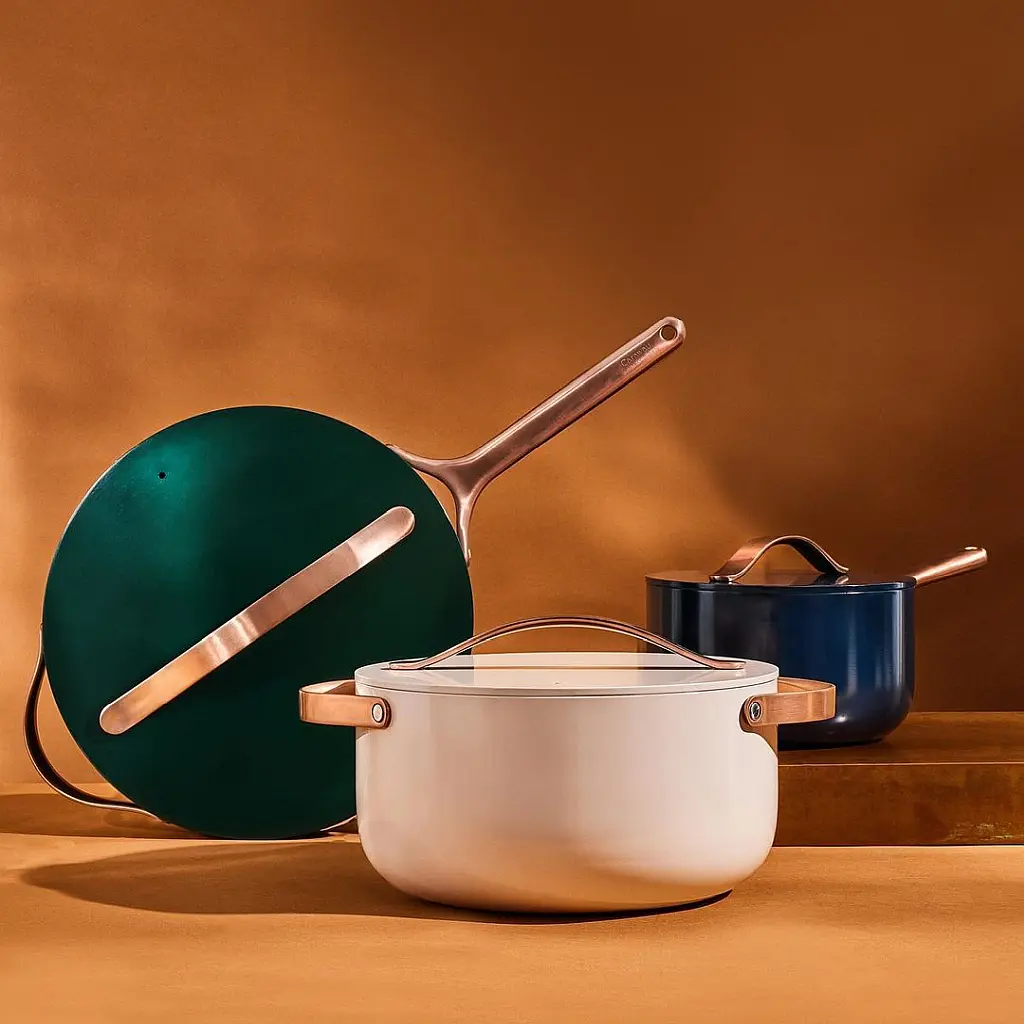
Product Range: All types of pots and pans, Bakeware, Cutting Boards, Tea Kettles, Griddles, and more
Caraway’s non-toxic cookware is a delight in themself, designed to elevate your kitchen decor while keeping your family healthy! The New York-based label is all about cooking that’s kind to you and the planet. Whether you’re a gourmet chef or just love a good mac-n-cheese, their eco-friendly nonstick cookware adds a healthy twist to your meals. From frying pans to Dutch ovens, Caraway has you covered. Plus, it’s induction cooktop-friendly and can handle high temps. And guess what? They come in a string of beautiful colors! Every Caraway piece boasts an aluminum core, high-quality stainless steel handles, and a non-toxic ceramic coating that’s free from harmful chemicals. So, cook with ease, style, and a clean conscience.
5. All-Clad

Product Range: Fry pans, Skillets, Chef pans, Dutch ovens, Saucepans, Roasters, Griddle and Grill pans, etc.
All-Clad has been in the cookware game since 1971, driven by the founder’s deep understanding of metallurgy and a passion for cooking. For using the best material for cooking utensils, this brand is celebrated for its safe and innovative designs. Its top-quality silicone and stainless steel utensils are crafted from 100% non-toxic materials, including pharmaceutical-grade silicone that’s free from BPA and BPS. Each piece of cookware is meticulously handcrafted by skilled artisans using the finest materials and groundbreaking bonding techniques at their mill in Canonsburg, PA. If you’re looking for a versatile set, their 6-piece stainless steel collection, made from polished 18/10 stainless steel, is a favorite for both cooking and baking enthusiasts.
6. Kana
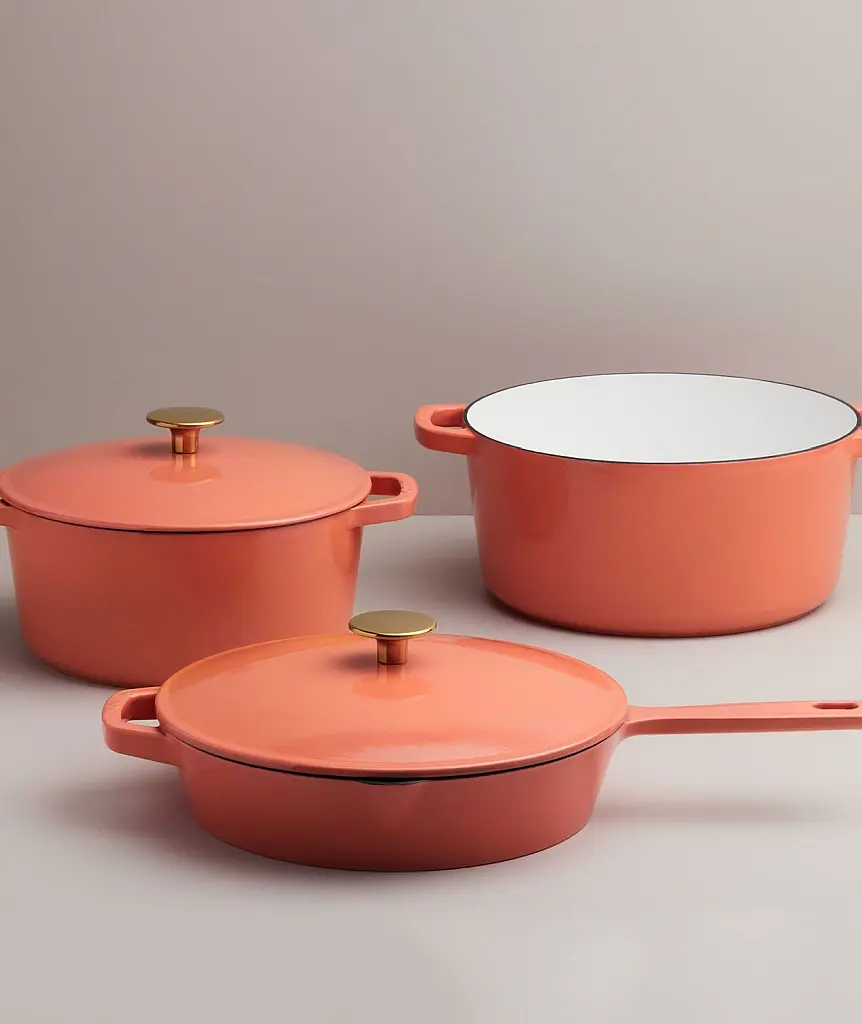
Product Range: Cast iron pans, Dutch ovens, Skillets, Bakeware, etc.
Kana is on a mission to help you design a sustainable kitchen with everyday kitchen items and heritage-inspired cookware. These utensils are crafted from enamelled cast iron, which naturally boasts non-stick properties. They’ve designed their kitchen products to be durable, backed by a lifetime warranty, and entirely free from harmful chemicals. And the mini Dutch oven is a standout, perfect for slow-cooked comfort dishes. So go, upgrade your kitchen with Kana’s eco-friendly Milo Cookware range, featuring stylish and sturdy utensils for professional-quality meal preparation. Their Ultimate Skillet, also made from enamelled cast iron, is oven-safe (up to 500°F), dishwasher-friendly, and compatible with all cooktops. To top it off, their cast iron cookware comes in a variety of delightful colors to suit every kitchen setup.
7. Our Place

Product Range: Pots, Pans, Cast iron hot skillet, Slotted turner, Wooden kitchen spoons, 6-piece set of utensil essentials, etc
Our Place believes in celebrating the joys of home-cooked healthy foods, and their cookware collection may be small, but it’s a game-changer. The star of the show is their famous Always Pan, a versatile wonder that can do it all – from braising to frying and even serving. It’s compatible with any cooktop and replaces a whopping eight different pieces of cookware. Add in the Perfect Pot, and you’ve got everything you need for a well-functioning kitchen in just two items. Made with a non-toxic ceramic surface, these solid pieces of cookware come with a beechwood spatula, and have a sturdy aluminum bottom for even heat. Plus, they’re free from harmful materials like lead and PTFEs, and the enamelled coating means no more seasoning. Based in Los Angeles, Our Place also teams up with organizations fighting food insecurity.
8. Staub

Product Range: Dutch ovens, Braisers, Grill pans, Saute pans, etc
Cast iron cookware can be gorgeous, and Staub proves it! For centuries, chefs have treasured cast iron’s remarkable prolonged heat retention and even cooking features. Staub carries this tradition forward with its enamelled cast iron utensils that are not just functional; but a work of art. Made in France, these cookware goes effortlessly from the stove to the oven to your table, adding that touch of magic to every meal. With incredible durability, it’s a daily kitchen companion for both home cooks and prestigious restaurants worldwide. These heirloom-quality pieces are built to last, ready to be cherished by generations. STAUB’s Le Cocotte is unbeatable for slow-cooking, making meats and veggies tender, and simmering up hearty stews and soups that warm the soul.
9. Bambu

Product Range: Bamboo products include Spoons, Spatula, Pair of bamboo tongs, Rice paddles, Bamboo cutting boards, etc.
Bambu takes healthy cooking to a whole new level with its range of wooden utensils made entirely from organic bamboo. As a B Corporation, they’re on a mission to eliminate waste and set the gold standard for eco-friendly business practices. Their bamboo cookware is not only compostable but also meticulously crafted using food-safe oils, water-based adhesives, and natural finishes. These products have passed rigorous tests and hold FDA and CPSC certifications for food safety. On their virtual shelves, you’ll discover a variety of utensils, from oval and round wooden spoons to spatula sets, tongs, pot scrapers, and more. Not only are they aesthetically pleasing with a minimalist design, but Bambu’s non-toxic cooking utensils are also USDA-certified organic, showcasing their commitment to quality and sustainability.
10. Emile Henry
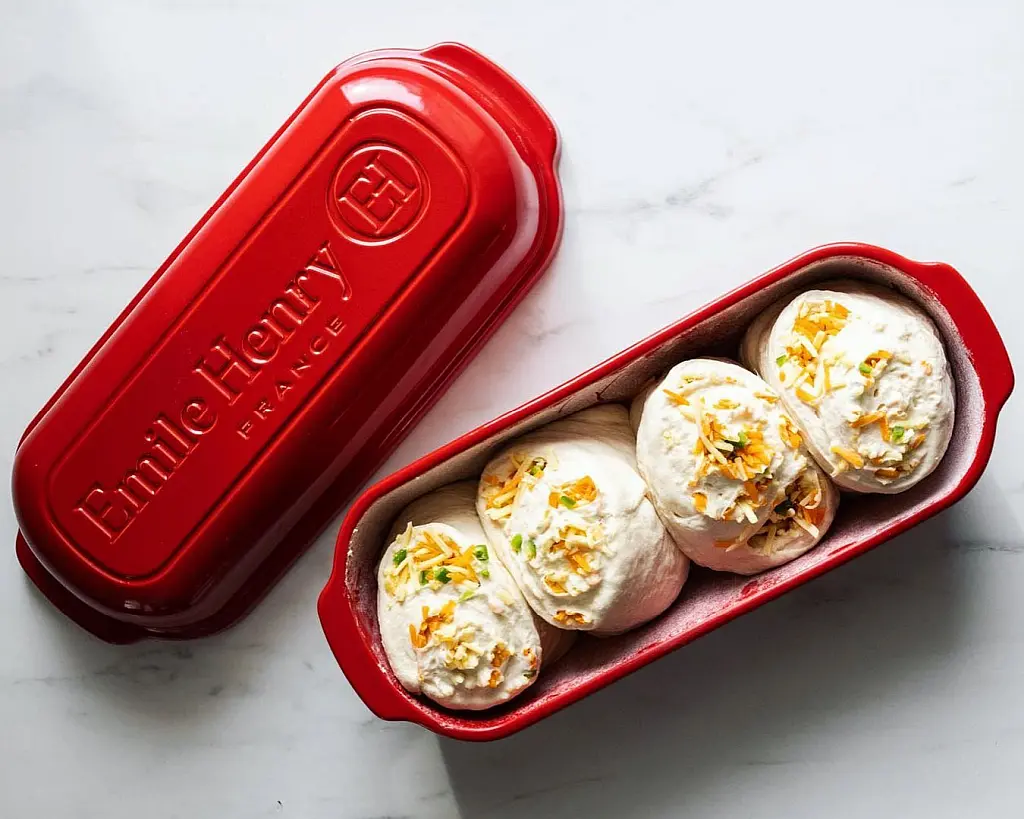
Product Range: Dutch ovens, Casserole, Braisers, Bakeware, etc
Established in 1850, Emile Henry is a French family-owned brand with a rich culinary history. Their specialty lies in constructing clay ceramic cookware, renowned for its heat resistance, durability, and chemical-free composition. This versatile cookware suits everyone, from artisanal bakers to fondue aficionados and those creating flavorful dishes with an abundance of spices and veggies. The utensils are built to handle oven temperatures up to 480°F (250°C), though they’re not intended for direct flame or hot plate use. Their HR cookware line is even resistant to thermal shock, allowing you to pop them straight from the freezer to the oven. Plus, these pots are dishwasher and microwave-friendly. An Emile Henry classic is their ruffled pie dish, designed for effortless pie release without the need for pre-greasing.
To Summarize…
In our efforts to whip up mouthwatering meals for our family, we often overlook the fundamental ingredient of a healthy meal – the cookware itself! But not anymore! As we’ve explored the diverse types of cooking utensil materials, one thing remains abundantly clear: safety should always be at the forefront of our culinary choices. Because those organic produce will never be able to provide us with their nutrition, if we compromise them by using the wrong cookware.
While the market is filled with beautiful utensils at affordable prices, its upon us to not get distracted, as our well-being and that of our loved ones hinge on the cookware we select. So, let’s choose to shop from brands that use the safest and best materials for cooking utensils. Let’s become the discerning chef who not only focuses on creating delicious meals but also ensures they are prepared in the most secure way possible.



